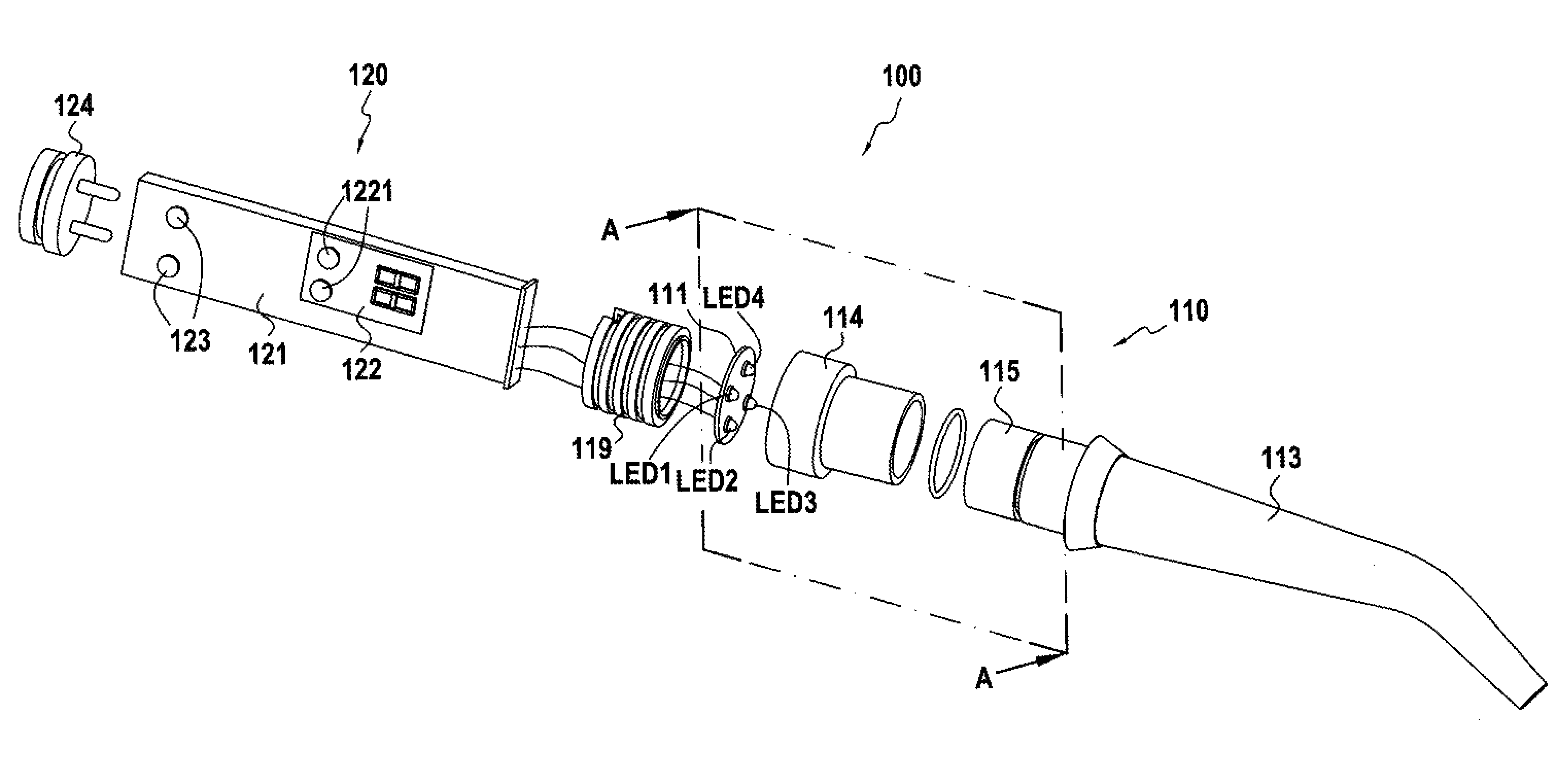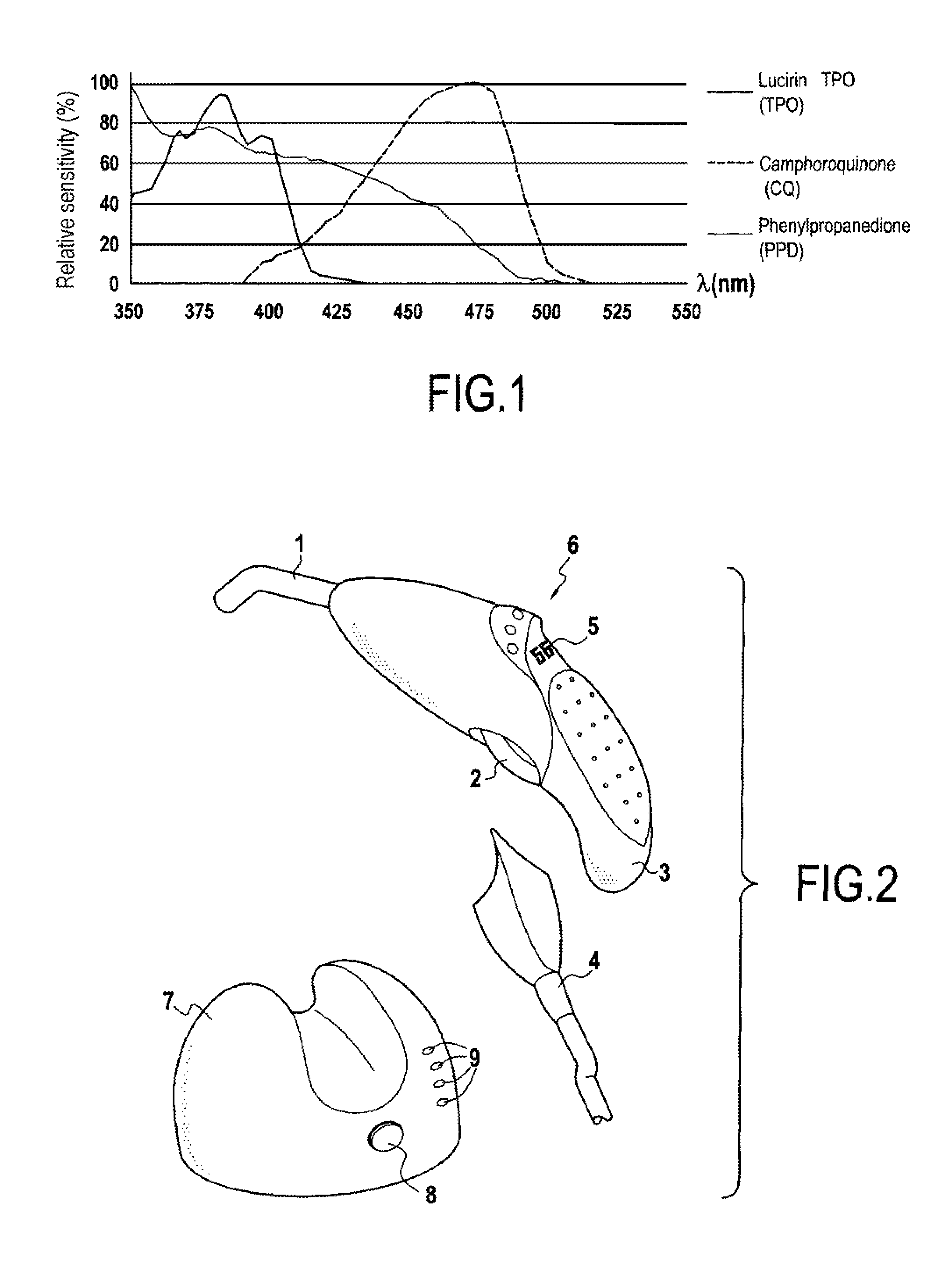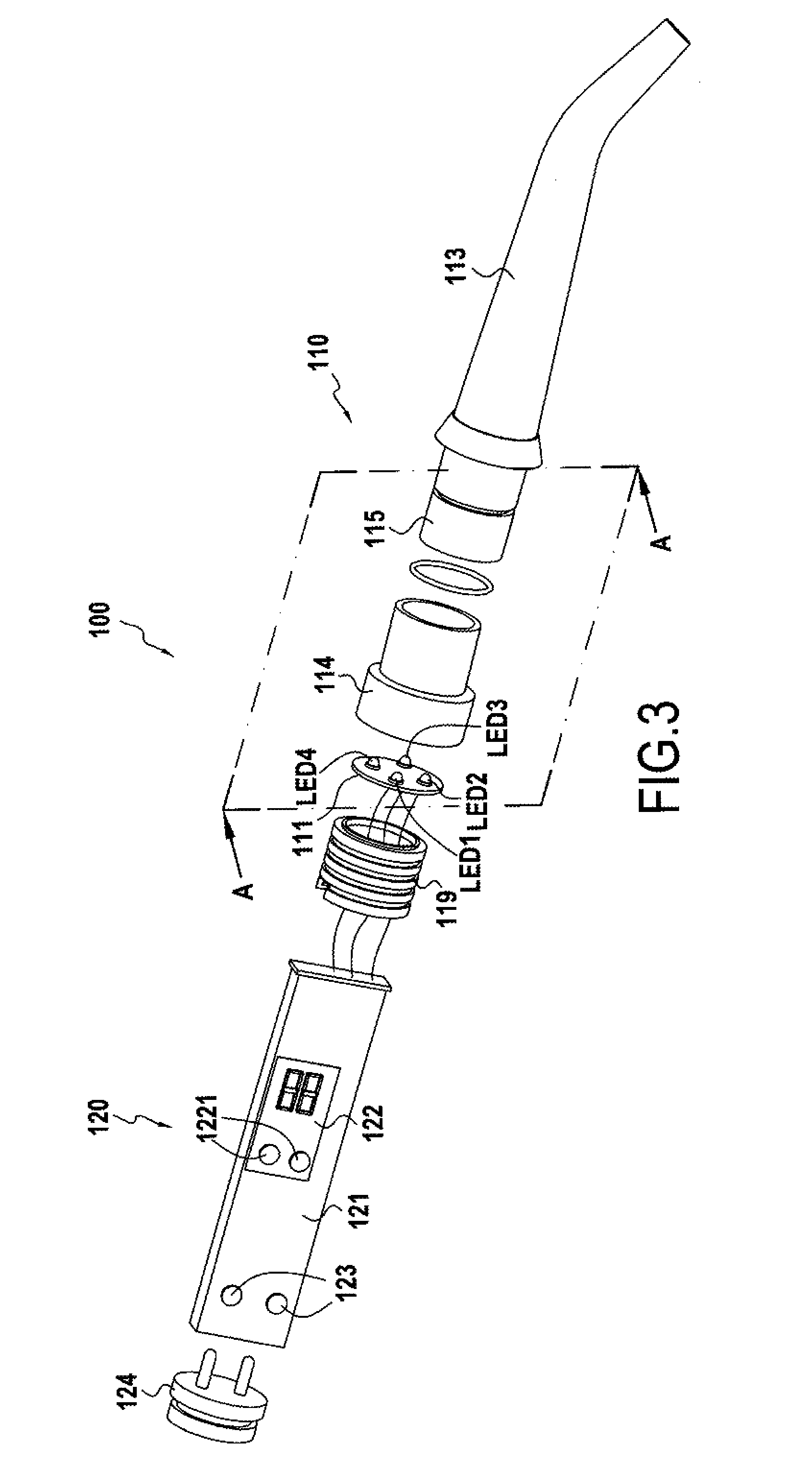Spectral scanning photocrosslinking device
a crosslinking device and spectral scanning technology, applied in the field of photocuring devices, can solve the problems of limiting the amount of energy that is delivered, the efficiency of such sources is quite low, and the purchase price and maintenance remain expensive, so as to reduce the power delivered to the leds, reduce the stress of temperature, and reduce the effect of power delivery
- Summary
- Abstract
- Description
- Claims
- Application Information
AI Technical Summary
Benefits of technology
Problems solved by technology
Method used
Image
Examples
Embodiment Construction
[0037]The present invention relates to a photo-curing device for applying light radiation in a given wavelength range (emission spectra) to a photo-curable material. The term “photo-curable material” is used to designate any type of material of molecular structure that is transformed under the effect of light radiation at a given wavelength, in particular by activating photo-initiators contained in the material and giving rise to covalent bonds that modify the structure of the material (hardening, adhesion, etc.). As non-limiting examples, the photo-curable materials may in particular be composite materials for hardening such as materials for filling, reconstruction, making an impression, adhesively bonding, or materials that need to be activated such as a whitener. The invention applies particularly but not exclusively to photo-curable materials used in the field of dentistry. The invention also applies to photo-curable materials to form surface coatings in the fields of cosmetics,...
PUM
 Login to View More
Login to View More Abstract
Description
Claims
Application Information
 Login to View More
Login to View More - R&D
- Intellectual Property
- Life Sciences
- Materials
- Tech Scout
- Unparalleled Data Quality
- Higher Quality Content
- 60% Fewer Hallucinations
Browse by: Latest US Patents, China's latest patents, Technical Efficacy Thesaurus, Application Domain, Technology Topic, Popular Technical Reports.
© 2025 PatSnap. All rights reserved.Legal|Privacy policy|Modern Slavery Act Transparency Statement|Sitemap|About US| Contact US: help@patsnap.com



